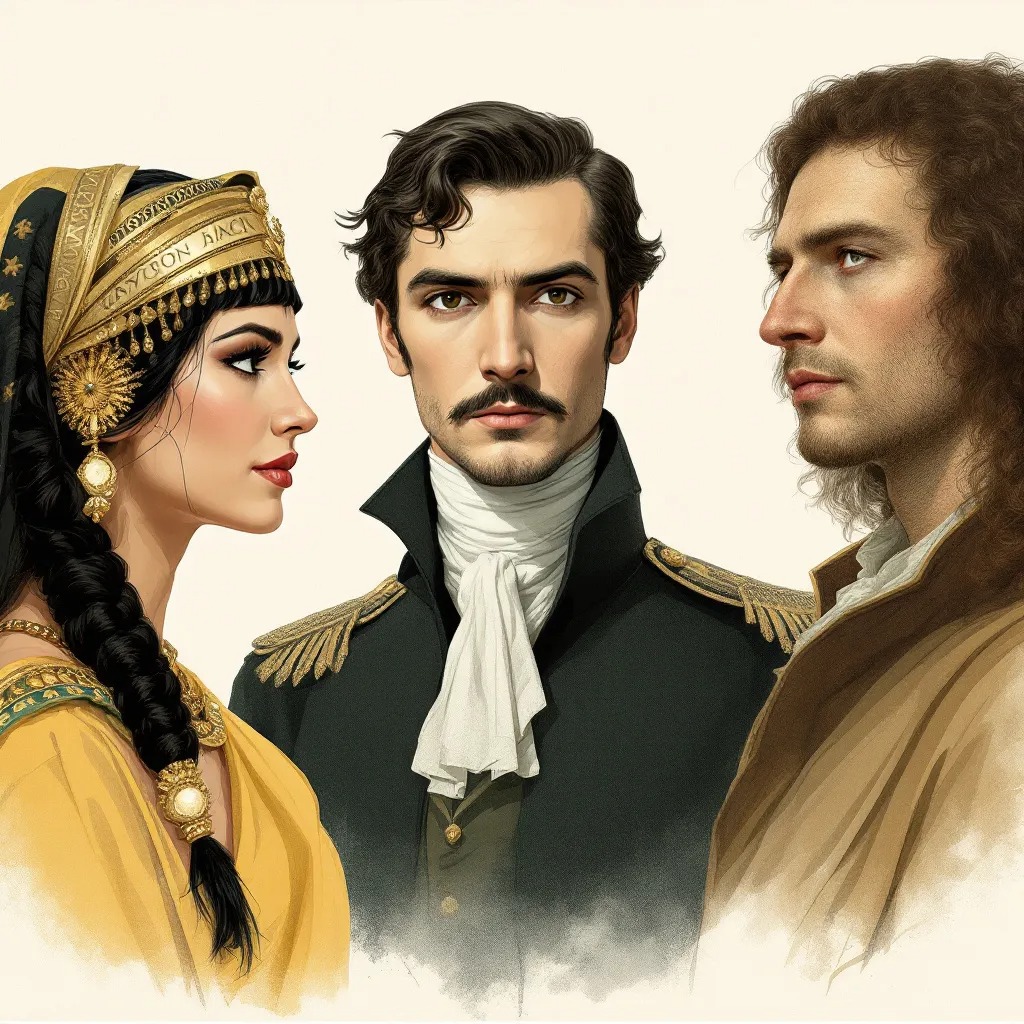Unlocking the Personality DNA of the Past
Can we decode the personalities of history’s most iconic leaders and thinkers using MBTI? While we can’t hand Cleopatra a personality test or invite da Vinci to take an online quiz, we can analyze their behavior, leadership styles, and decisions to hypothesize their cognitive preferences.
By aligning known traits with the MBTI framework—based on Carl Jung’s psychological functions—we begin to see patterns. This speculative exploration reveals how extraversion or introversion, intuition or sensing, thinking or feeling, and judging or perceiving shaped history’s most extraordinary lives.
A Quick Primer: Understanding the MBTI Framework and Its 16 Types
The Myers-Briggs Type Indicator (MBTI) is a personality typing system that categorizes individuals into 16 unique types, each based on combinations of four dichotomies:
- Extraversion (E) vs. Introversion (I)
- Sensing (S) vs. Intuition (N)
- Thinking (T) vs. Feeling (F)
- Judging (J) vs. Perceiving (P)
Each type has a dominant cognitive function supported by auxiliary, tertiary, and inferior functions. Though MBTI analysis of historical figures is speculative, it offers a powerful lens to understand their choices, charisma, and legacies.
Cleopatra (ENTP): The Charismatic Strategist Who Rewrote the Rules
Cleopatra VII of Egypt was no ordinary monarch—she was a political visionary, polyglot, and tactical genius. Her blend of charm, innovation, and adaptability aligns well with the ENTP profile.
- Dominant Function – Extraverted Intuition (Ne): Saw possibilities beyond traditional diplomacy
- Auxiliary – Introverted Thinking (Ti): Calculated and pragmatic decision-making
- Tertiary – Extraverted Feeling (Fe): Leveraged emotional intelligence in alliances
- Inferior – Introverted Sensing (Si): Honored tradition selectively, always with purpose
She reshaped Egypt’s fate not by brute force but by forging strategic alliances with Julius Caesar and Mark Antony—hallmarks of ENTP diplomacy and ingenuity.
Napoleon Bonaparte (ENTJ): The Vision-Driven Architect of Empire
Napoleon’s relentless ambition, precise planning, and battlefield adaptability point clearly to ENTJ—the Commander archetype.
- Dominant Function – Extraverted Thinking (Te): Built systems and strategies for scalable control
- Auxiliary – Introverted Intuition (Ni): Maintained long-term geopolitical vision
- Tertiary – Extraverted Sensing (Se): Reacted boldly to moment-by-moment changes
- Inferior – Introverted Feeling (Fi): Internal values clashed with his authoritarian façade
His ability to consolidate power and reform legal, economic, and educational systems reveals the hallmark of a structurally brilliant ENTJ leader.
Leonardo da Vinci (INTP): The Infinite Curiosity of the Polymath
Leonardo da Vinci’s staggering range of interests—from anatomy to flight to painting—embodies the INTP’s philosophical exploration and technical brilliance.
- Dominant Function – Introverted Thinking (Ti): Sought internal conceptual clarity
- Auxiliary – Extraverted Intuition (Ne): Connected abstract ideas across disciplines
- Tertiary – Introverted Sensing (Si): Meticulous record-keeping of observations
- Inferior – Extraverted Feeling (Fe): Expressed emotional depth through visual art
His notebooks, inventions, and masterpieces reflect an insatiable desire to understand how the world works—a pure expression of INTP cognition.
Winston Churchill (ENTP): The Orator Who Inspired Resilience
Churchill’s legendary speeches, razor-sharp wit, and adaptability in wartime align with the ENTP’s love of persuasion, ideas, and challenge.
- Ne + Ti: Swiftly reframed problems and improvised strategies
- Fe: Connected emotionally with the public in times of despair
- Si: Anchored national identity in historical memory
He didn’t just lead—he reframed the narrative, using visionary rhetoric and strategic irreverence to shape the morale of a nation.
Marie Curie (INTJ): The Singular Focus of a Scientific Pioneer
Marie Curie’s breakthroughs in radioactivity reveal the INTJ’s signature blend of vision, logic, and personal conviction.
- Ni: Pursued long-range scientific questions beyond convention
- Te: Built repeatable experiments and refined methodology
- Fi: Quietly fueled by personal meaning and determination
- Se: Demonstrated practical precision in lab environments
Her refusal to yield in male-dominated institutions and her unrelenting scientific drive reflect the INTJ’s ability to channel solitude into brilliance.
Abraham Lincoln (INFJ): The Visionary Reformer of Divided Times
Lincoln’s introspective wisdom, moral leadership, and unifying vision match the INFJ archetype—the Advocate.
- Ni: Focused on long-term consequences of division and unity
- Fe: Spoke to the conscience of a nation
- Ti: Applied logic to frame just, fair policies
- Se: Used grounded language to reach diverse audiences
His empathy-driven policies and clear-sighted navigation of national trauma exemplify INFJ integrity and foresight.
Personality and Power: How MBTI Illuminates Historical Leadership
Each MBTI type brings unique strengths to leadership:
- ENTJs and INTJs: Long-range planners and empire builders
- ENTPs and INTPs: Innovators, idea architects, and iconoclasts
- INFJs: Ethical visionaries with transformative missions
- ISFJs and ESFJs: Quiet stewards of tradition and care
- ESTPs and ISTPs: Tactical, real-time decision-makers
While MBTI cannot replace historical nuance, it offers a deeper understanding of how personality shapes leadership, legacy, and innovation.
What These Profiles Teach Us About Ourselves
When we look into the personalities of historical giants, we don’t just decode their greatness—we reflect on our own.
- Are you the architect, like Napoleon, shaping systems with strategic clarity?
- Do you pursue meaning like Lincoln, with vision rooted in empathy?
- Are you endlessly curious, like da Vinci, probing every angle of the world?
History doesn’t just inform us—it mirrors us. Understanding how MBTI types shaped leaders helps us shape ourselves, with intention, vision, and authenticity.

